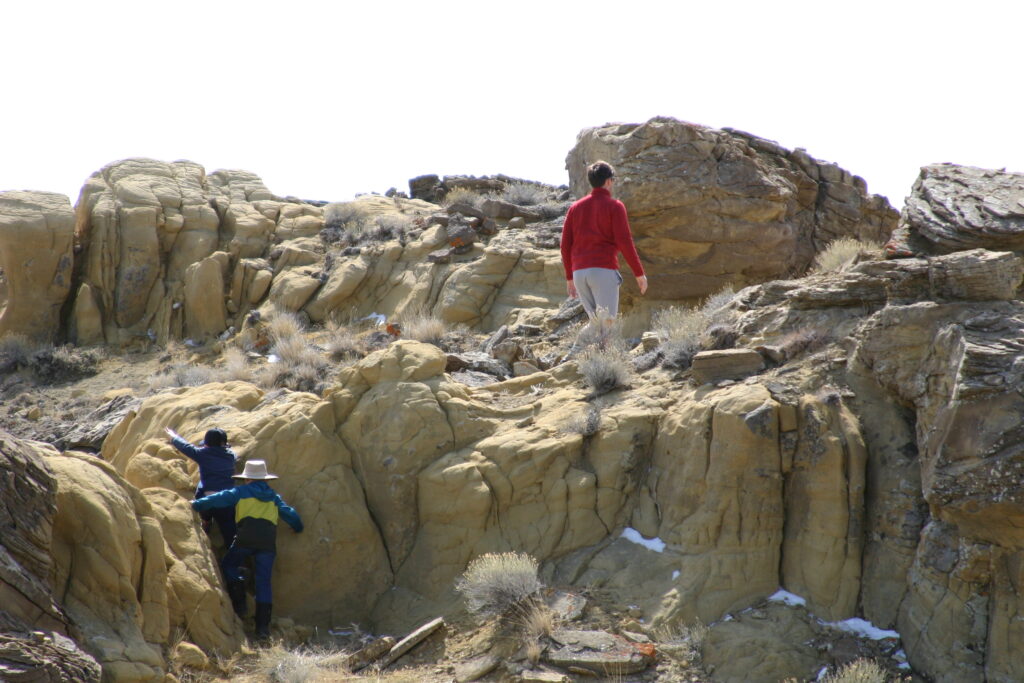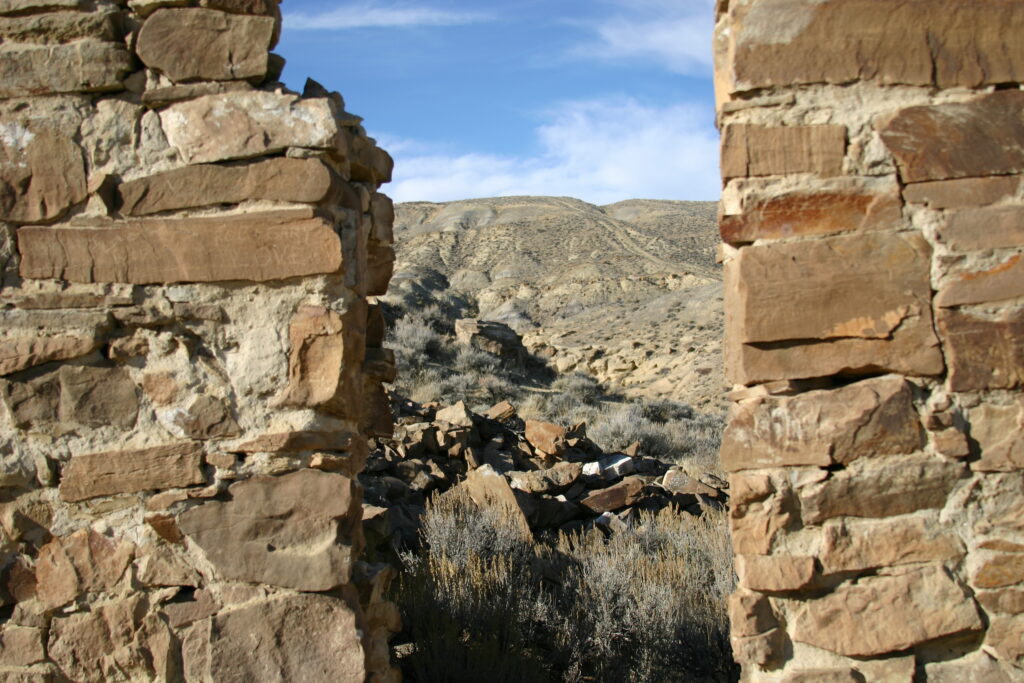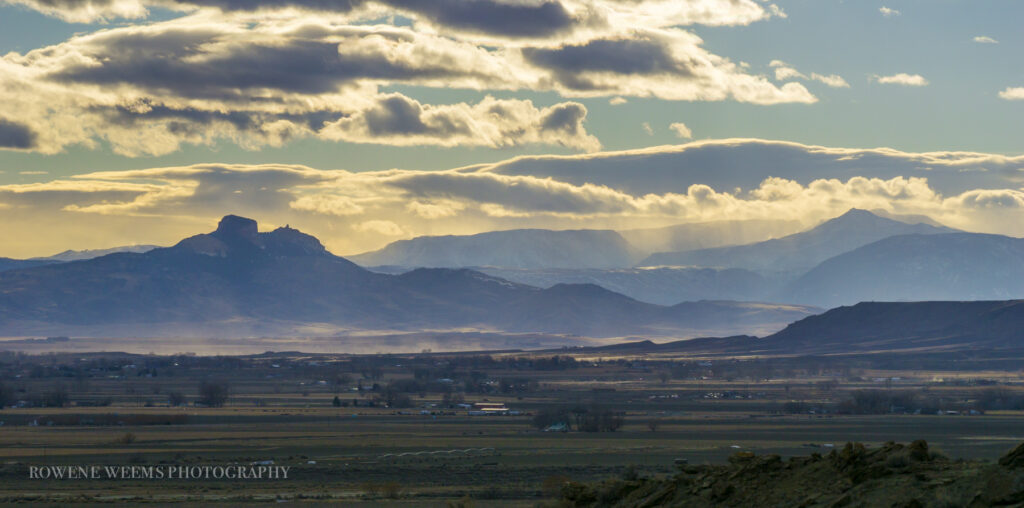Whether you’re a longtime Powell local or visiting the area from abroad, Powell is a fantastic basecamp for family-friendly outdoor recreation and exploration. From mountain biking to skiing to fishing, there are endless opportunities to explore designated recreation areas. However, if you’re looking for new ways to enjoy the region, consider geotourism in Powell, Wyoming.
What is Geotourism?
Geotourism turns the landscape and geological sites into the destination rather than just the scenery you drive past on the journey to somewhere else. The phrase was coined in England in the early 1990s, and it has grown in popularity due to the explosion of ecologically conscious tourism known a ecotourism.

What’s the Difference Between Ecotourism and Geotourism?
Geotourism is for geologically curious travelers. Whereas ecotourism celebrates flora and fauna, geotourism focuses on geomorphology–the physical characteristics of the Earth’s surface. Though you may be headed to Yellowstone to see bison, elk, and grizzly, you can couple your ecotourism with geotourism by visiting the alluvial fan formation in the dramatic Clarks Fork Canyon or take a detour to visit the 300-million-year-old Heart Mountain, which came into formation when this high desert was a tropical sea.
Who Are Geotourists?
Walk, hike, climb, or sit in your car, geotourism in Powell, Wyoming is for the young and old, able-bodied and disabled. One wonderful aspect of geotourism is that it only requires as much effort as you want to put into it. The sheer grandeur of Wyoming’s geological features can be appreciated from your vehicle, but if you’re adventure seeking, geosites often have nearby hiking trails for seasonal recreationists.
However you decide to view the spectacular geological formations, be sure to visit GeoWyo.com
Before you head out, don’t forget to pack Fritz and Thomas’s Roadside Geology of Yellowstone Country for enlightening commentary on the region.
3 Geosites within 45 minutes of Powell Wyoming
Polecat Bench (aka “The Bench”)

Polecat Bench is 10 minutes from downtown Powell. The closest destination on the list. The Bench is the unsung hero of geotourism in Powell, Wyoming. Many locals don’t even know the name of the looming bench-like formation that serves as the backdrop to Powell. However, Ivy League universities have been setting up camp on Polecat for decades to study its unique paleontology. Significant fossils have been found here.
While you’re here, see if you can locate the remnants of the old stage stop.
Hint: If you come across a section of slick rock that would make for great mountain biking, you’re close! Wear boots and pack your snake bite kit.
Clarks Fork Canyon
As you drive through the vast moraine fields on Canyon Road, the mouth of the Clarks Fork Canyon reveals its breathtaking scale. 42 minutes from Powell, the free-flowing Clarks Fork River tumbles down from Colter Pass. Though the energy of the Clarks Fork River is something to behold, it’s really the anticline that serves as the centerpiece of this miraculous vista.
On the south side of the river, the Bald Mountain anticline shoots up from the valley in a stunningly naked display of motion over time. It is a radical and breathtaking sight that any viewer can appreciate. To the north side of the river, sharp and angular Chugwater formations rise from the red dirt like rock fins. To get a different perspective, hike the Bridal Falls trail and behold the same formations from the interior of the canyon.
The kicker: subsurface mapping suggest that the Clark’s Fork region is still developing!
Man has made his mark own mark in this canyon with rocks too. As you walk along the river, keep an eye out for the remnants of Native American tepee rings.
Heart Mountain

Lovingly named, Heart Mountain’s geological biography suggests that the world’s largest landslide transported the rock from its original birthplace dozens of miles away in the Beartooth Range. Now, Heart Mountain rises from the Big Horn Basin like a lone and bold sentinel. How did it get so far from home, you wonder? Well, research suggests that the release of carbon dioxide gas below the surface created an air cushion similar to the of a hovercraft. This served to reduce friction as it was deliver to its current resting place.
On your way to visit the mountain, take in a lesson from more recent history at the Heart Mountain Interpretive Center. The Interpretive Center was formally a Japanese internment camp during World War II, and its current mission is to tell the story of Japanese internment camps to future generations.
There is endless opportunity for exploration in the Powell area. So if you like this article, keep an eye for more ways to enjoy the region near Powell on your way to Yellowstone National Park. Did you know Yellowstone National Park is the size of Rhode Island and Delaware combined? Here are some hacks to maximize your Yellowstone trip.
- Enjoy the Region with Geotourism in Powell, Wyoming - February 4, 2021
